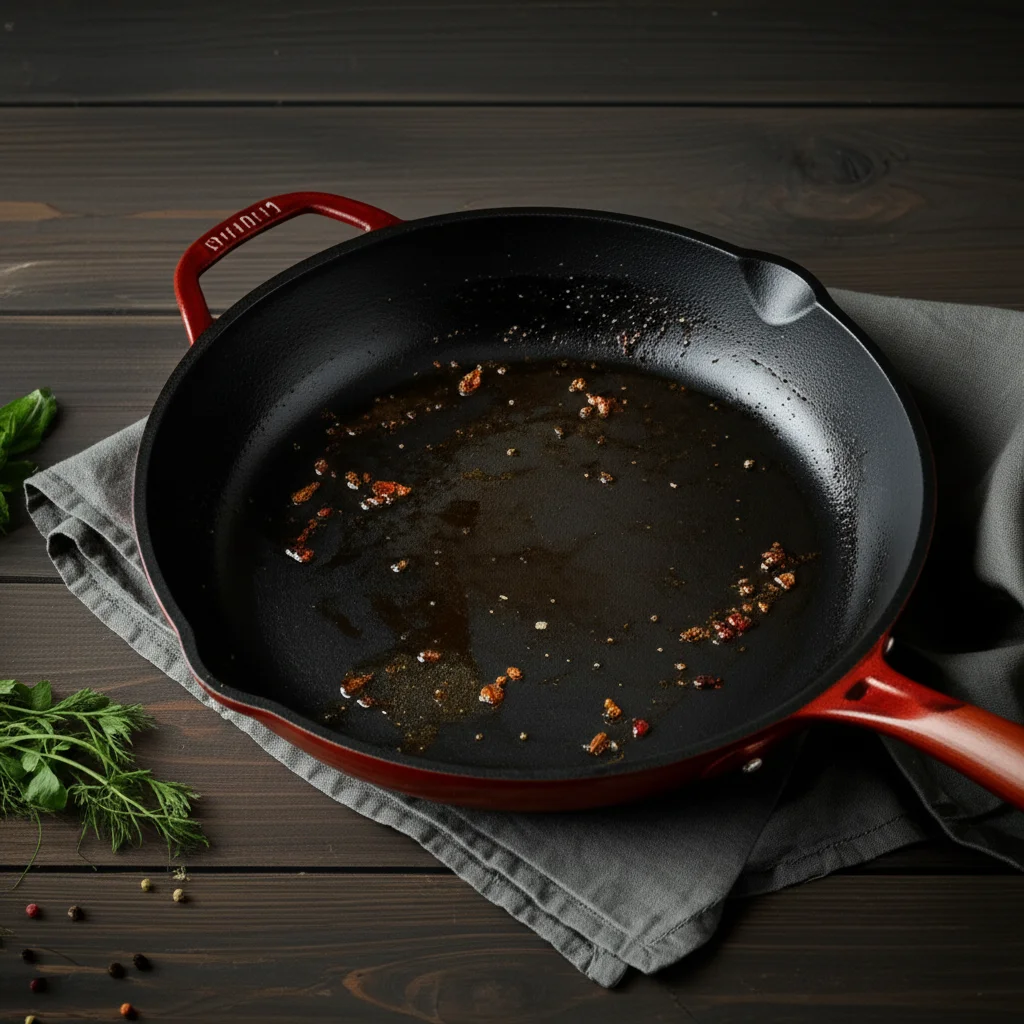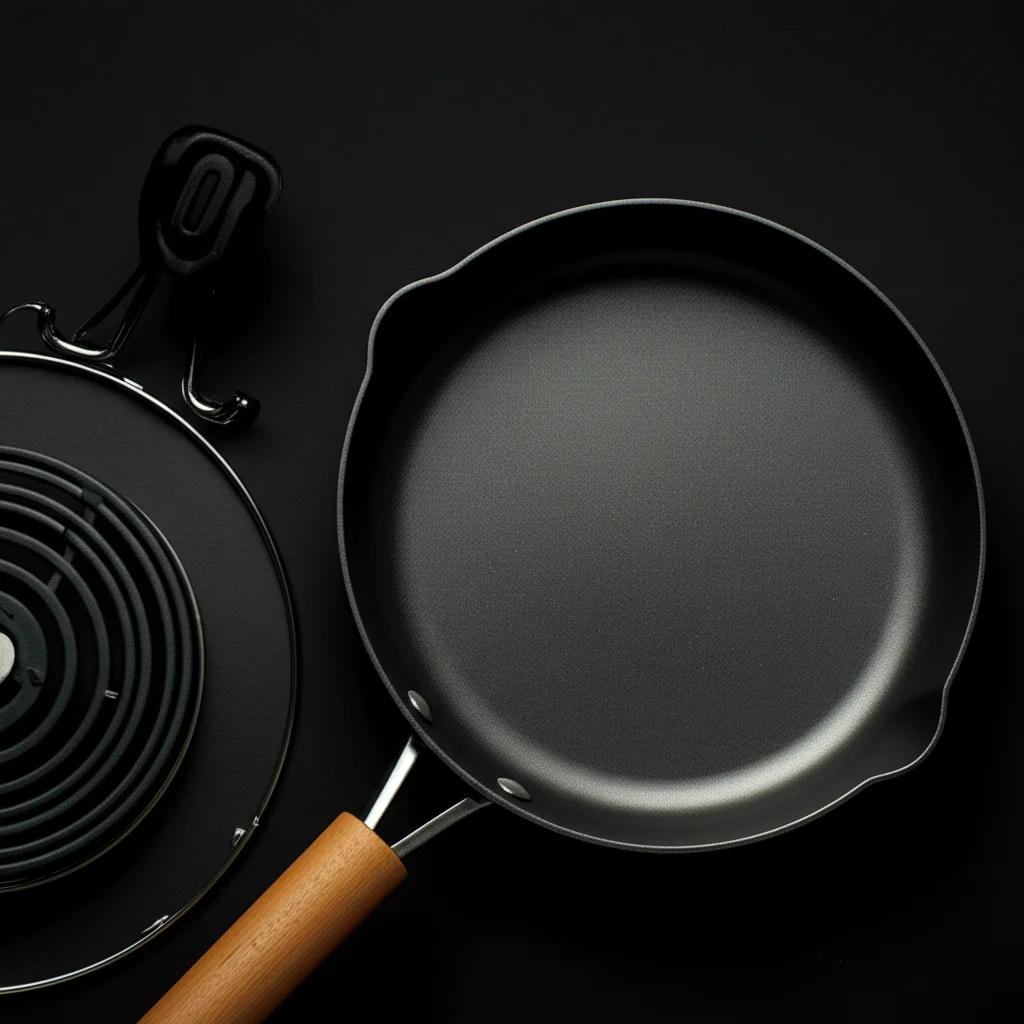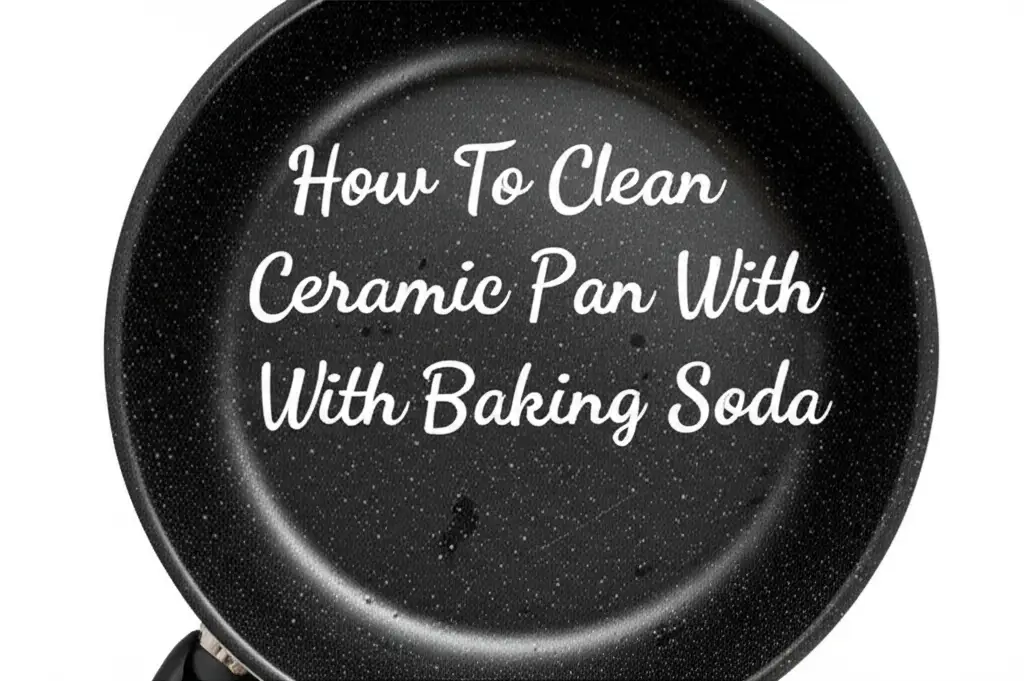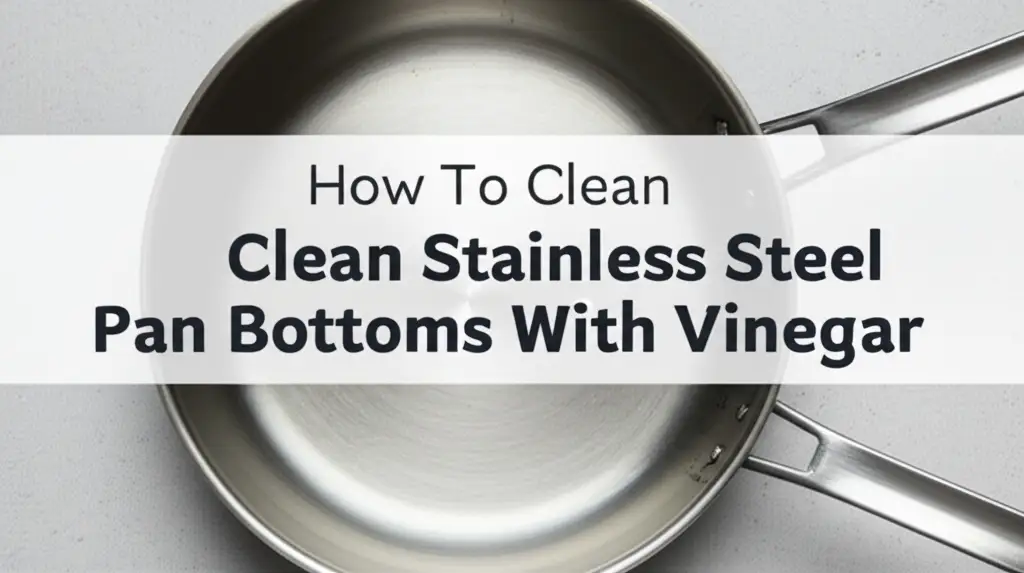· Davia Murnell · Kitchen Care · 18 min read
How To Clean The Bottom Of Pans

Restore Your Cookware: How To Clean The Bottom Of Pans
Ever stared at the underside of your favorite pan and wondered what happened? Those dark, sticky layers of grease and grime build up over time. They make your kitchen look messy and can even affect how your pan heats food. Learning how to clean the bottom of pans is simple once you know the right steps.
This article will guide you through effective methods to remove stubborn stains. We will cover everything from basic scrubbing to powerful natural solutions. You will discover how to bring back the shine to your cookware. Get ready to transform your grimy pans into sparkling ones.
Takeaway
- Use baking soda and vinegar for effective removal of baked-on grease.
- Lemon and salt offer a natural, abrasive cleaning solution for tough stains.
- Specialized methods like oven cleaner work for extreme buildup, but use them with caution.
- Clean pans regularly to prevent future accumulation of grime.
- Match your cleaning method to the pan’s material for best results and to avoid damage.
To clean the bottom of pans, combine baking soda with a small amount of water to form a paste. Apply this paste to the affected areas and let it sit for at least 15-30 minutes, or longer for tough stains. Scrub with a non-abrasive scourer or brush, then rinse thoroughly. Repeat as needed for stubborn burnt-on residue.
Why Pan Bottoms Get Dirty: Understanding The Buildup
The bottoms of our pans often accumulate a stubborn layer of grime. This happens for several reasons in the kitchen. Splatters of oil and food particles can burn onto the surface during cooking. High heat from the stove bakes these splatters onto the pan’s exterior. This creates a hard, dark residue.
Sometimes, pans sit unevenly on burner grates, causing certain areas to burn more. This contributes to uneven staining. Over time, these layers thicken. They become incredibly difficult to remove with just soap and water. Understanding this buildup helps us choose the right cleaning methods.
Ignoring these dirty pan bottoms can lead to problems. The burnt residue can make your pans less efficient. It can also cause odors if not cleaned. Clean pans simply perform better. They also look much nicer in your kitchen. Taking the time to clean the bottom of pans is a good investment.
You might notice that certain pans, like those used for deep frying, get dirtier faster. This is because they are exposed to more oil at high temperatures. Even non-stick pans can develop residue on their non-stick exteriors. Different materials react differently to heat and grease. This means some methods work better for certain pan types.
Regular maintenance is key to preventing severe buildup. A quick wipe after each use can make a big difference. However, for existing grime, stronger solutions are necessary. We will explore those next.
Basic Cleaning Methods for Light Grease Buildup
For pans with lighter grease or minimal buildup, simple methods work well. You do not always need harsh chemicals. A good scrub can often do the job. This approach is gentle on your pans and your hands. It is also a good habit for daily pan care.
Start by letting your pan cool completely. Never try to clean a hot pan. This can warp the metal and cause injury. Once cool, fill the sink with warm, soapy water. Add a generous amount of dish soap.
Submerge the bottom of your pan in the soapy water. Let it soak for at least 15-20 minutes. This helps to loosen any grease or food particles. Soaking makes scrubbing much easier. It prepares the grime for removal.
After soaking, use a non-abrasive sponge or scrub brush. I often use a brush with stiff bristles. Scrub the bottom of the pan in circular motions. Focus on areas with visible grease. You might be surprised how much comes off with just this step. For overall pan cleaning, see our guide on how to clean pots and pans.
Rinse the pan thoroughly with clean water. Check for any remaining residue. If some light spots remain, you can repeat the scrubbing. This method is effective for fresh stains. It also works great for maintaining clean pans. Regular use of this basic cleaning can prevent heavy buildup. This makes your kitchen tasks easier.
Tackling Baked-On Grease with Baking Soda and Vinegar
When the bottom of your pans has stubborn, baked-on grease, you need a stronger solution. Baking soda and vinegar are powerful natural cleaners. They create a chemical reaction that lifts tough grime. This method is effective and safe for most pan materials. I use it often for my own pots.
First, make sure the pan is dry. Sprinkle a generous layer of baking soda over the entire dirty bottom surface. You want to cover all the dark spots. Do not be shy with the amount. The more baking soda, the better the reaction.
Next, slowly pour white vinegar over the baking soda. You will see it fizz immediately. This fizzing action helps to break down the grease. The combination creates a powerful cleaning agent. Let the mixture sit on the pan for at least 30 minutes. For very tough stains, I let it sit for a few hours or even overnight. This gives the ingredients time to work.
After soaking, use a non-abrasive scrubbing pad or a stiff brush. Firmly scrub the pan’s bottom. The grime should start to lift away easily. You might need to add a little more baking soda or vinegar if a spot is exceptionally stubborn. I find that persistent scrubbing in small circles works wonders. This method is excellent for getting rid of grease that seems impossible to remove. If you want more tips on how to clean stubborn grease, check out our guide on how to clean baked-on grease from pans.
Rinse the pan thoroughly with warm water. You will see a significant improvement. This baking soda and vinegar paste is a fantastic way to restore your pan bottoms. It brings back their original shine.
Lemon and Salt Power: A Natural Abrasive Solution
For certain types of stains and materials, lemon and salt offer an excellent natural alternative. This combination provides both acidity and abrasive power. It is particularly effective for light discoloration and grease. I often turn to this method for a fresh-smelling clean. It is a simple yet powerful technique.
First, cut a lemon in half. You will use one half as your scrubbing tool. Sprinkle a generous amount of coarse salt onto the bottom of your pan. Table salt can work, but coarser salt provides better abrasion. The salt acts as a gentle scrubber.
Now, take the cut half of the lemon. Use it to scrub the salt into the pan’s surface. Squeeze the lemon slightly as you scrub. This releases more lemon juice. The acidity of the lemon juice helps to break down grease and stains. The salt helps to scour them away. Focus on the areas with the most buildup.
Continue scrubbing for several minutes. You should see the grime start to loosen and mix with the lemon-salt paste. For very stubborn spots, let the lemon-salt mixture sit on the pan for 10-15 minutes before scrubbing again. This gives the lemon acid more time to work on the stains. This method is great for copper bottom pans. Learn more about cleaning these specific types of pans in our guide on how to clean copper bottom pans.
After scrubbing, rinse the pan thoroughly with warm water. Dry it immediately to prevent water spots. This method is especially good for stainless steel and copper pans. It leaves them looking clean and shiny. The fresh lemon scent is also a bonus.
Cream of Tartar for Stainless Steel and Copper Pans
Cream of tartar is a surprising but effective cleaning agent. It is particularly useful for restoring the shine to stainless steel and copper pans. This acidic powder works wonders on tarnished or discolored surfaces. I discovered this trick years ago, and it has been a game-changer for my metal cookware. It is a gentle yet powerful option.
To use cream of tartar, first, make a paste. Mix a few tablespoons of cream of tartar with a small amount of water. You want a thick paste, similar to toothpaste consistency. Apply this paste directly to the stained or discolored areas on the bottom of your pan. Ensure the entire affected area is covered.
Let the paste sit on the pan for 10-15 minutes. This allows the acidic properties to react with the tarnish or burnt residue. For tougher spots, you can leave it on a bit longer. The cream of tartar works to lift the discoloration from the metal surface.
After waiting, use a soft cloth or sponge to gently scrub the paste into the pan. You will see the stains begin to disappear. The surface will start to look brighter. This method is not overly abrasive. This means it is safe for delicate metal finishes. It helps to preserve the integrity of your stainless steel or copper. For more comprehensive cleaning information on stainless steel, read our article on how to clean stainless steel pans.
Rinse the pan thoroughly with warm water. Dry it immediately with a clean towel. Your stainless steel and copper pans will look remarkably better. This method helps maintain the beauty and performance of your metal cookware.
Heavy-Duty Solutions: When to Use Oven Cleaner or Specialized Cleaners
Sometimes, the grime on the bottom of pans is so thick and old that natural methods are not enough. This is when you might need to use heavy-duty cleaners. Oven cleaner is a powerful option for extremely baked-on grease. It contains strong chemicals that break down tough residues. I only use this method as a last resort, always with caution.
Before using oven cleaner, read the product instructions carefully. Ensure your pan’s material is compatible with oven cleaner. Most stainless steel and cast iron pans can handle it. Avoid using oven cleaner on non-stick surfaces, aluminum, or anodized aluminum. It can damage these materials permanently.
Always work in a well-ventilated area. Wear rubber gloves and eye protection. Spray the oven cleaner generously onto the dry bottom of the pan. Cover the entire grimy area. Let it sit for the time recommended on the product label. This is usually 15-30 minutes, but for very tough grime, it might be longer. The chemicals need time to dissolve the baked-on grease.
After the waiting period, use a stiff brush or a plastic scraper to remove the softened grime. You will see thick, dark residue coming off easily. This method is incredibly effective for severe buildup. For particularly stubborn burnt grease from frying pans, refer to our specific guide on how to clean burnt grease from bottom of frying pans.
Rinse the pan thoroughly with hot, soapy water. Wash it several times to ensure all chemical residue is gone. Dry the pan completely before storing. Specialized pan cleaners are also available. These products often target specific types of stains or materials. Always choose a cleaner suitable for your pan’s material.
Cleaning Different Pan Materials: Tailoring Your Approach
Not all pans are created equal, and neither are their cleaning needs. The material of your pan dictates the best cleaning method. Using the wrong technique can damage your cookware. Knowing your pan’s material is the first step to a successful cleaning. I always identify the material before starting.
Stainless Steel Pans
Stainless steel is durable but prone to discoloration from high heat and burnt-on food. For everyday cleaning, hot soapy water and a non-abrasive scrub pad work well. For stubborn burnt spots or heat tinting, a paste of baking soda and a little water is excellent. Apply it, let it sit, then scrub. Lemon and salt or cream of tartar also restore shine. Avoid harsh abrasives that can scratch the surface. This material often benefits from specific approaches when stains are tough. For detailed instructions on how to clean burnt stainless steel pans, consult our article on how to clean stainless steel pans burnt.
Cast Iron Pans
Cast iron requires specific care to maintain its seasoning. Never use harsh soaps, steel wool, or abrasive cleaners on seasoned cast iron. These can strip away the protective layer. For food stuck to the bottom, use hot water and a stiff nylon brush or a plastic scraper. For very stubborn spots, boil some water in the pan. This helps loosen the residue. After cleaning, dry the pan thoroughly on the stove. Apply a thin layer of cooking oil to re-season it. This protects the surface.
Copper Bottom Pans
Copper is beautiful but can tarnish easily. The copper layer on the bottom of pans needs gentle care. Avoid abrasive scrubbers that can scratch the finish. For tarnished copper, a paste of lemon juice and salt works wonders. You can also use a specialized copper cleaner. Apply the cleaner, rub gently, then rinse and dry. For detailed instructions on how to clean copper bottom pans, consult our article on how to clean copper bottom pans. Vinegar and salt can also remove tarnish and restore shine. Always dry copper immediately after cleaning to prevent water spots.
Non-Stick Pan Exteriors
While the inside of non-stick pans is easy to clean, their exteriors can still accumulate grease. Use mild dish soap and a soft sponge. Avoid abrasive cleaners or metal scrubbers. These can scratch or damage the non-stick coating on the outside. For baked-on grease, try a paste of baking soda and warm water. Apply it gently, let it sit, then wipe with a soft cloth. Do not use oven cleaner on non-stick surfaces, as it can ruin them. Gentle methods preserve the pan’s integrity.
Advanced Techniques for Stubborn Stains and Discoloration
Even with general methods, some pan bottoms retain tough stains or heat discoloration. These advanced techniques tackle those persistent issues. They involve slightly more effort or specialized products. I’ve found these particularly useful for older, neglected pans. They can make a real difference.
The Bar Keepers Friend Method
Bar Keepers Friend is a popular cleaner, especially for stainless steel. It contains oxalic acid, which is excellent at removing rust, tarnish, and heat discoloration. It comes in both powder and liquid forms. I prefer the powder for more control.
- How to use: Wet the bottom of the pan. Sprinkle Bar Keepers Friend powder directly onto the surface. Add a few drops of water to form a paste. Use a damp sponge or cloth to scrub the paste into the stained areas. Scrub in the direction of the grain on stainless steel if possible. You will see the discoloration lift away. Rinse thoroughly and dry.
The Boil Method for Heavy Buildup
This method works well for very thick, burnt-on residue. It helps to loosen the grime before scrubbing. It requires more time but less direct scrubbing effort.
- How to use: Place the pan on your stove. Pour enough water into the pan to cover the bottom layer of grime. Add a few drops of dish soap and a tablespoon of baking soda. Bring the mixture to a boil. Let it simmer for 15-30 minutes. The hot, soapy water helps to soften the baked-on grease. Once cooled, the residue should be easier to scrape off with a plastic scraper. This is excellent for deep cleaning tough spots.
Using a Pumice Stone (with extreme care)
A pumice stone can remove extremely heavy carbon buildup. This is a very abrasive method. Use it only on heavy-duty, un-coated metal pans like cast iron or very thick stainless steel. Never use it on non-stick, aluminum, or delicate finishes. I consider this a last resort.
- How to use: Wet the pumice stone and the pan bottom. Gently rub the pumice stone over the burnt areas. Use light pressure at first. Increase pressure only if needed. The pumice stone will wear down as it cleans. Rinse frequently to remove loosened grime. Be very careful not to scratch the pan’s surface unnecessarily. This is primarily for outdoor or very heavy-use cookware.
These techniques target the toughest stains. They ensure your pan bottoms look their best. Always test a small, inconspicuous area first if you are unsure. This prevents any potential damage.
Preventing Future Buildup: Keeping Your Pans Clean
Cleaning the bottom of pans thoroughly is a great start. But prevention is key to keeping them that way. Regular maintenance saves you a lot of effort in the long run. I have found that a few simple habits make a big difference. These practices ensure your pans stay cleaner, longer.
Wipe Down After Every Use
The easiest way to prevent buildup is to wipe your pan’s exterior immediately after it cools. Use a damp cloth to wipe away any oil splatters or food residue. Do this before it has a chance to bake on. This quick action removes fresh grease. It stops it from becoming a stubborn problem.
Avoid Overfilling Pans
When you cook, avoid filling pans too high. This prevents liquids or oil from bubbling over the sides. Overflows are a common cause of external pan grime. Keep the contents below the rim. This simple step minimizes spills and subsequent burning.
Use Proper Heat Settings
Cooking on excessively high heat can cause food and oil to burn more readily onto the pan’s bottom. Match your burner size to your pan. Use medium heat for most cooking. High heat is rarely necessary and often leads to scorched surfaces. Proper heat control reduces charring.
Clean Spills Immediately
If something spills onto the burner or stovetop during cooking, clean it up as soon as it cools enough to safely touch. Do not let it sit and burn onto the pan during subsequent uses. A quick wipe can prevent a big cleaning job later. This helps keep your cooking surface clean too.
Regular Deep Cleaning
Even with daily care, some buildup can occur. Schedule a regular deep cleaning for your pans. Once a month or every few weeks, give the bottoms a thorough clean. Use the methods discussed earlier, like baking soda and vinegar. This prevents layers from accumulating and becoming impossible to remove. Consistent effort yields lasting results.
By adopting these preventative measures, you will spend less time scrubbing. Your pans will stay cleaner and perform better. A clean kitchen starts with clean tools.
FAQ Section
How do I remove black burnt grease from the bottom of a pan?
To remove black burnt grease, create a paste with baking soda and a small amount of water. Apply it thickly to the burnt areas. Let it sit for several hours or overnight. Then, pour white vinegar over the baking soda paste, letting it fizz. Scrub vigorously with a non-abrasive scourer until the grime lifts. Rinse well.
Can I use oven cleaner on all types of pan bottoms?
No, you cannot use oven cleaner on all pan bottoms. Oven cleaner is highly effective for stainless steel and cast iron pans. However, it can damage non-stick coatings, aluminum, anodized aluminum, and delicate finishes like copper. Always check your pan’s material and the cleaner’s instructions before use to avoid damage.
What causes the bottom of my pans to get sticky and black?
The bottom of pans gets sticky and black from burnt-on oil and food splatters. When cooking, oil and food particles escape from the pan’s interior and land on the hot exterior. The heat then bakes these residues onto the surface over time. This creates a hard, dark, and sticky layer of carbonized grease that is difficult to remove.
Is it safe to use steel wool on pan bottoms?
Using steel wool is generally not safe for most pan bottoms. It is too abrasive and can scratch or damage the surface of stainless steel, non-stick, copper, and aluminum pans. Steel wool can also strip the seasoning from cast iron. Stick to non-abrasive scrubbers, plastic scrapers, or stiff nylon brushes for cleaning.
How often should I clean the bottom of my pans?
For light cleaning, wipe the bottom of your pans after every use. For deeper cleaning, aim to clean the bottom of your pans once a month. If you notice significant buildup or discoloration sooner, clean them as needed. Regular maintenance prevents grime from becoming too severe and difficult to remove.
Conclusion
Bringing the shine back to the bottom of your pans makes a big difference. It is about more than just looks. Clean pans perform better and last longer. We have explored several powerful methods. These range from simple soap and water to advanced techniques using baking soda, vinegar, lemon, salt, and specialized cleaners. You now have a toolkit to tackle any level of grime.
Remember to consider your pan’s material when choosing a cleaning method. Stainless steel, cast iron, and copper all require unique care. Preventing buildup is just as important as cleaning it. A quick wipe after each use and consistent deep cleaning will keep your cookware in top shape. You can transform your dirty pans into sparkling ones. Take action today and restore your cookware. A clean kitchen truly helps create a happy home!





